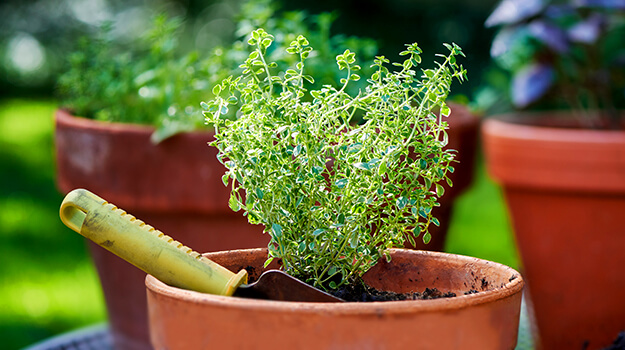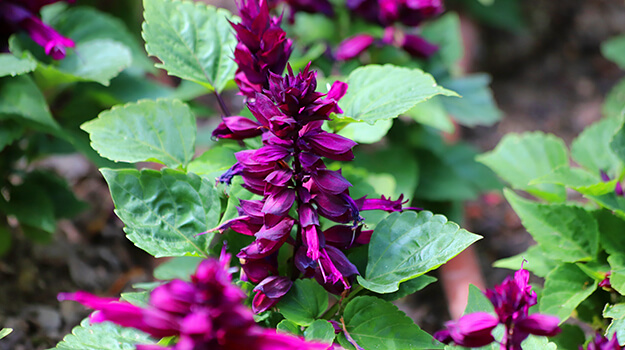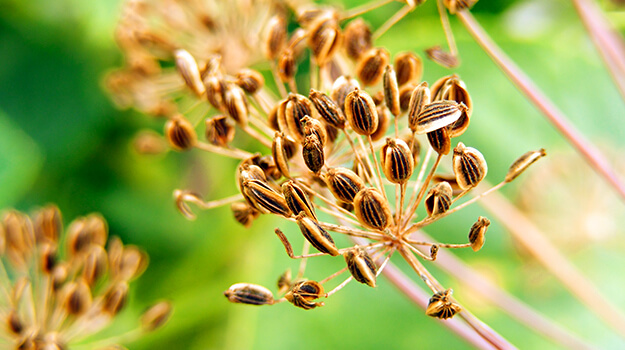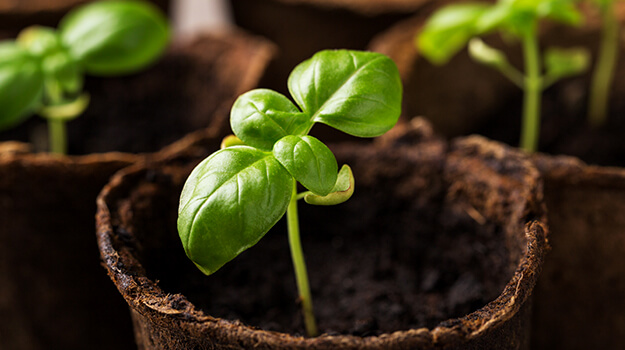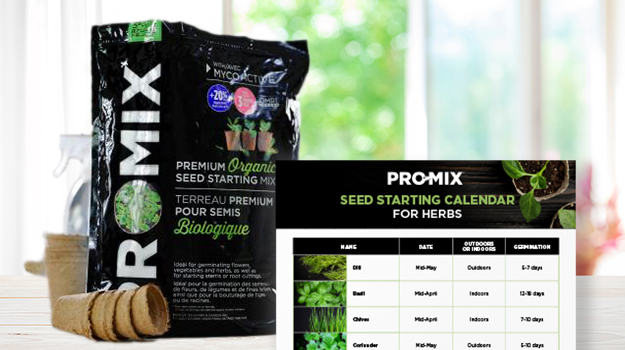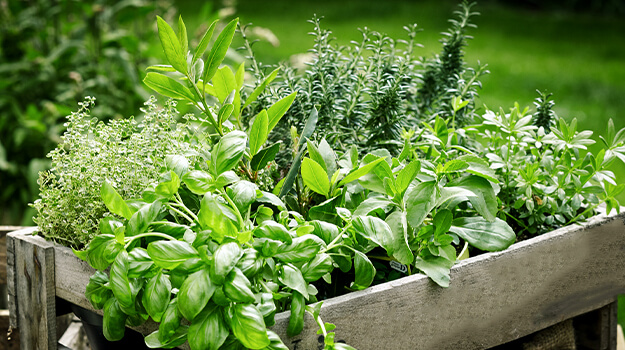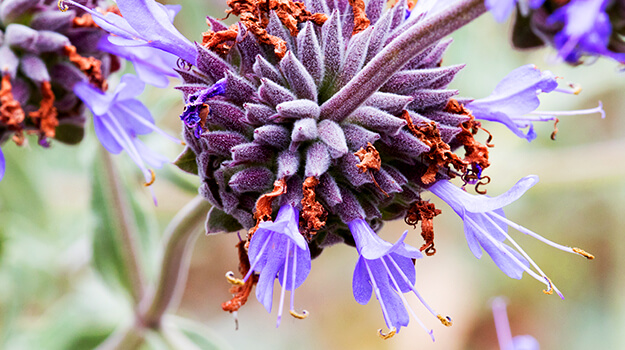- Sow or plant aromatic herbs
- Why planting instead of sowing
- Why sow instead of planting
- Which seeds to choose
- Should you buy organic seeds
- What are coated seeds
- When to start indoor sowing for aromatic herbs
- Which soil to choose for your seedlings
- Which container to choose for sowing aromatic herbs
- How to successfully sow seeds
- Which aromatic herbs to sow
Why sow aromatic herbs?
Mainly for the same reason that we sow vegetables or flowers: to have original and extraordinary varieties, impossible to find in stores.
However, there are other reasons why some varieties are better to be sown rather than planted. We’ll explain which ones and give you the best advice for successfully sowing aromatic herbs.
Sow or plant aromatic herbs
Most of the time, we have the choice between the two options, sowing or planting, depending on what we give precedence to, for example, an early harvest or one that will last all season.
However, in some cases, it’s the plant that dictates which way we choose.
Why planting instead of sowing
Some plants take a long time to germinate (sometimes up to 2 months!) or give random and irregular germination. Other plants require very specific care that can discourage even the most ardent fans of sowing.
Take the case of tarragon, a plant that takes several weeks to germinate. Once germinated, it remains very sensitive to the humidity level of the soil. Not to mention that it is likely to die if it’s grown in soil that is too rich. And consider the fact that it rarely flowers, which creates a shortage of seeds. In this case, it’s better to grow tarragon from plants. It’s preferable to propagate it by taking cuttings or by dividing it.
As for some perennial herbs, it can also take a whole year (for sage and thyme) before being able to harvest your first crop. For rosemary, it will take two years!
And as is the case for all plants, during these long dry spells, they will need to be given the care they require: regular watering, weeding, etc.
Why sow instead of planting
To begin with, sowing allows you to have access to young plants. In the case of annual herbs whose leaves are used (coriander, basil, parsley, etc.), the harvest period will be longer if you start them from seed.
The lovely plants that you get in pots at the garden centre are ready to harvest. This means that their season is already advanced. Transplanting accelerates the maturation process, so the plant will quickly go to seed. This will be the time to harvest the seeds and the end of the leaf harvest period.
Next, some aromatic herbs have taproots and do not tolerate transplanting well. Sowing them in biodegradable pots will allow you to integrate them into the garden without disturbing their roots. This is how it is recommended to sow dill, borage, caraway, chervil and fennel.
TIP: Sowing your own seeds gives you access to exceptional varieties. It is a great opportunity to discover rare and original herbs. As each packet contains a lot of seeds and a few plants are often enough, share your discoveries with family and friends!
Which seeds to choose
Seeds sold online and at garden centres are usually of good quality and have a good germination rate. It is best to use seeds within two years of harvest. To ensure their freshness, check the date that generally appears on the packaging.
Should you buy organic seeds
By selecting organic gardening (using organic soil, organic fertilizers and no pesticides), you are choosing to grow healthy food for your family with the greatest respect for the planet.
In a spirit of sustainable environmental protection, the use of organic seeds should be preferred to so-called classic or conventional seeds. The production method of seeds that are not certified organic allows the use of phytosanitary products. These products will leave residues in the soil, in the water and possibly on the seeds you are about to plant.
Discover all the steps of organic growing : Indoor sowing: how to make an organic vegetable garden
NOTE:
Phytosanitary products (which means “for plant health”) are chemical or organic products that promote a better harvest. Previously, they were called “pesticides”. They are grouped into 3 categories: products against pests (insecticides, fungicides, etc.), products against weeds (herbicides) and growth regulators.
What are coated seeds
Herb seeds are often tiny and difficult to handle. In recent years, to solve the problem, seed companies have been offering seeds wrapped in a natural clay-based coating. Without danger to health or the environment, this facilitates both planting and germination.
PRO TIP
Mixing uncoated seeds with fine sand or flour makes it easier to plant ultrafine aromatic seeds that we tend to sow too tightly!
When to start indoor sowing for aromatic herbs
Herbal seeds can be sowed indoors from February or March, depending on the date of the last frost in your region and the variety of herb chosen. To find out when to start sowing your aromatic herbs, consult our sowing calendar here: aromatic herbs calendar
Which soil to choose for your seedlings
A well-adapted soil will provide your seedlings with an environment favourable to germination. Our Organic Seed Starting Mix has a fine and light texture, perfect for the most delicate seeds. It is airy and well-drained while having excellent water retention, which reduces the need for watering.
Which container to choose for sowing aromatic herbs
As mentioned earlier, many aromatic plants have roots that do not tolerate transplanting well. By choosing peat pots, you avoid transplant shock because, when the time comes, you can bury the biodegradable pots in the ground or slide them into decorative pots.
On the deck or patio, whether in pots or hanging baskets, herbs are easy to grow and can therefore be kept on hand. You can also create superb arrangements with aromatic herbs, in combination or paired with flowers and ornamental plants.
To discover the most beautiful varieties for your arrangements, read our article : How to succeed with your potted arrangements
How to successfully sow seeds
- Moisten the seed starting mix (it should not be soaked).
- Fill each pot with soil, without packing it down.
- Place 3 to 5 seeds on the soil, avoiding handling them too much.
- Cover the seeds with a thin layer of potting mix (for ultrafine seeds, simply tamp down with your fingertips to ensure good contact with the potting mix).
- Spray lukewarm water using a mister (avoid using a watering can, whose flow can move or push the seeds too deeply).
- Identify your seedlings (variety, date and number of days before germination).
- Cover the containers with a dome or a transparent plastic bag.
- Place the seedlings in a location where they will be warm.
- Always keep the soil moist. DO NOT LET IT DRY OUT BETWEEN WATERINGS.
- Remove the dome or plastic bag when the first true leaves appear.
Before fertilizing your seedlings, wait until they have 4 to 6 true leaves. While they can survive without fertilization (the seed starting mix meets the plant’s early needs and the seeds themselves store the plant's nutrient reserve), too much fertilizer can kill them. Learn when and how to fertilize your seedlings in our article : How to use fertilizers when growing vegetables | Gardening
TIP
You can soak your seeds in water for 24 hours to soften them before planting them. Although this step is optional, it is recommended to promote the germination of parsley seeds.
Which aromatic herbs to sow
Annuals can only be propagated by sowing seeds. This is the case for dill, basil, savory, anise, coriander, chervil and marjoram. In northern regions, parsley and sage are generally grown as annuals.
Perennial herbs, such as garlic, chives, oregano, tarragon, mint and thyme, will return every year. Although perennial herbs can also be sown, a faster propagation method such as cuttings, division or grafting is often preferred.

